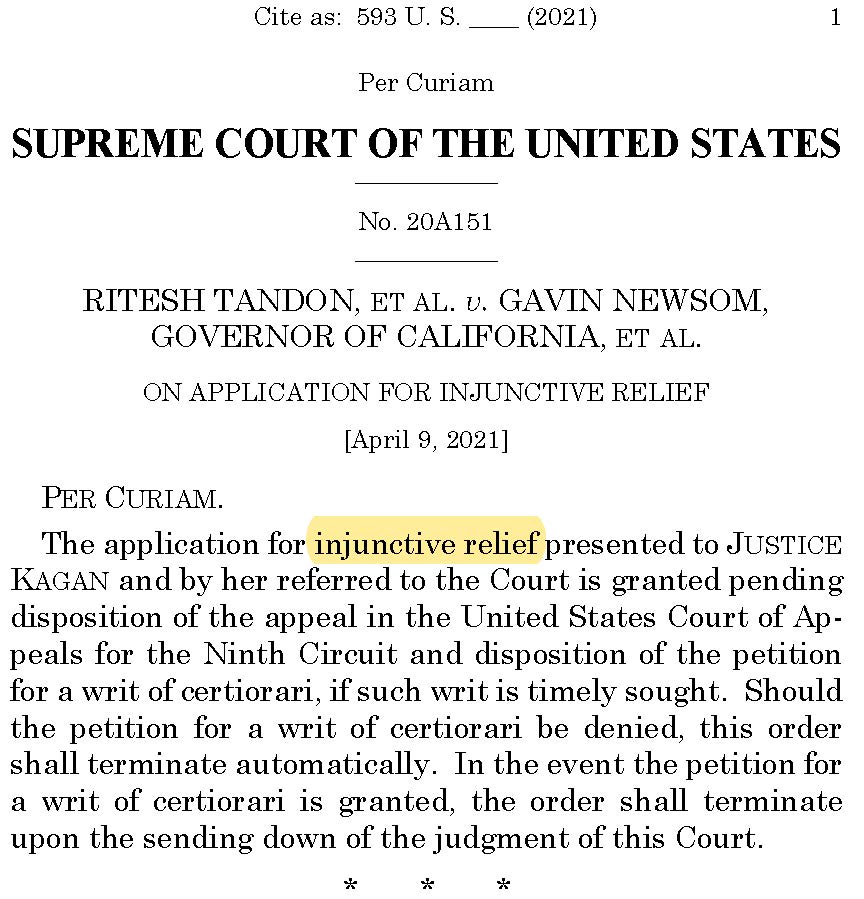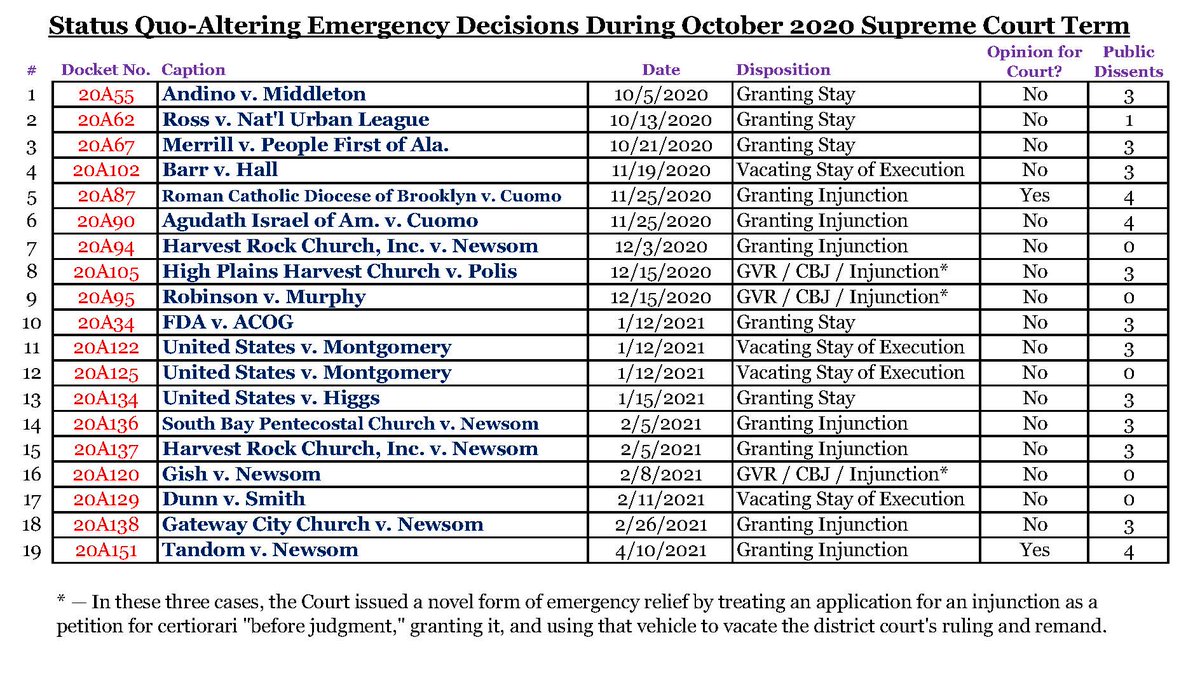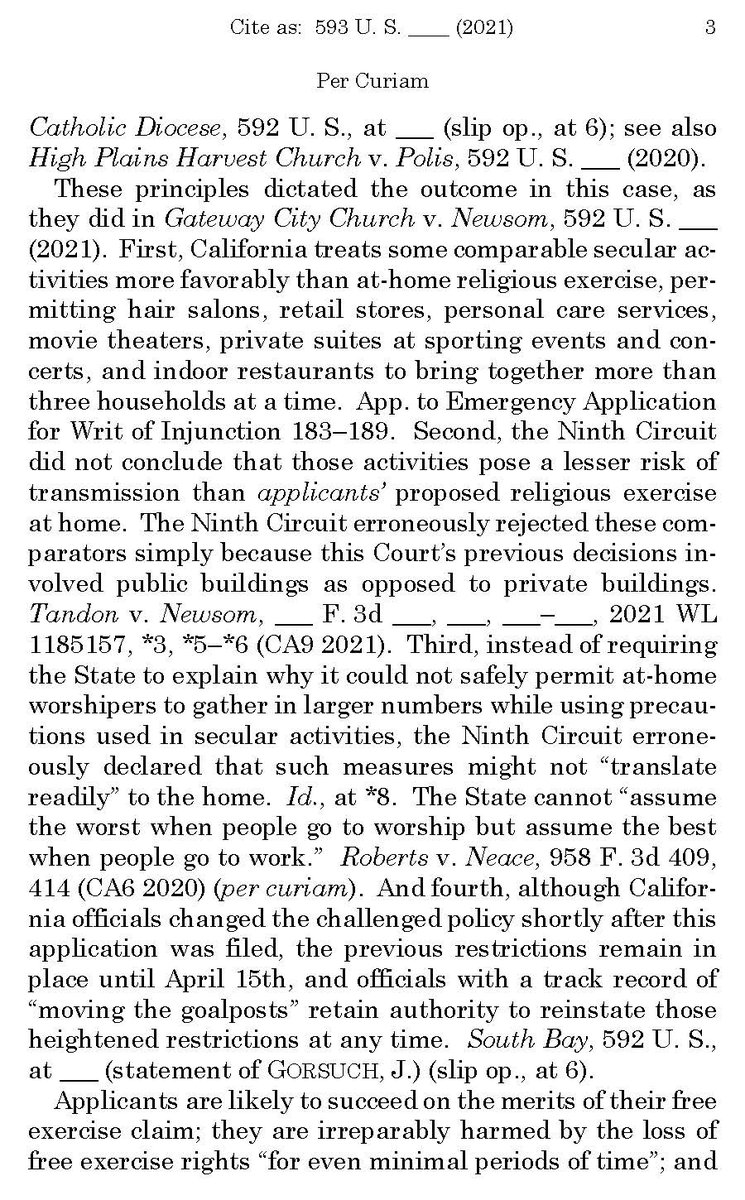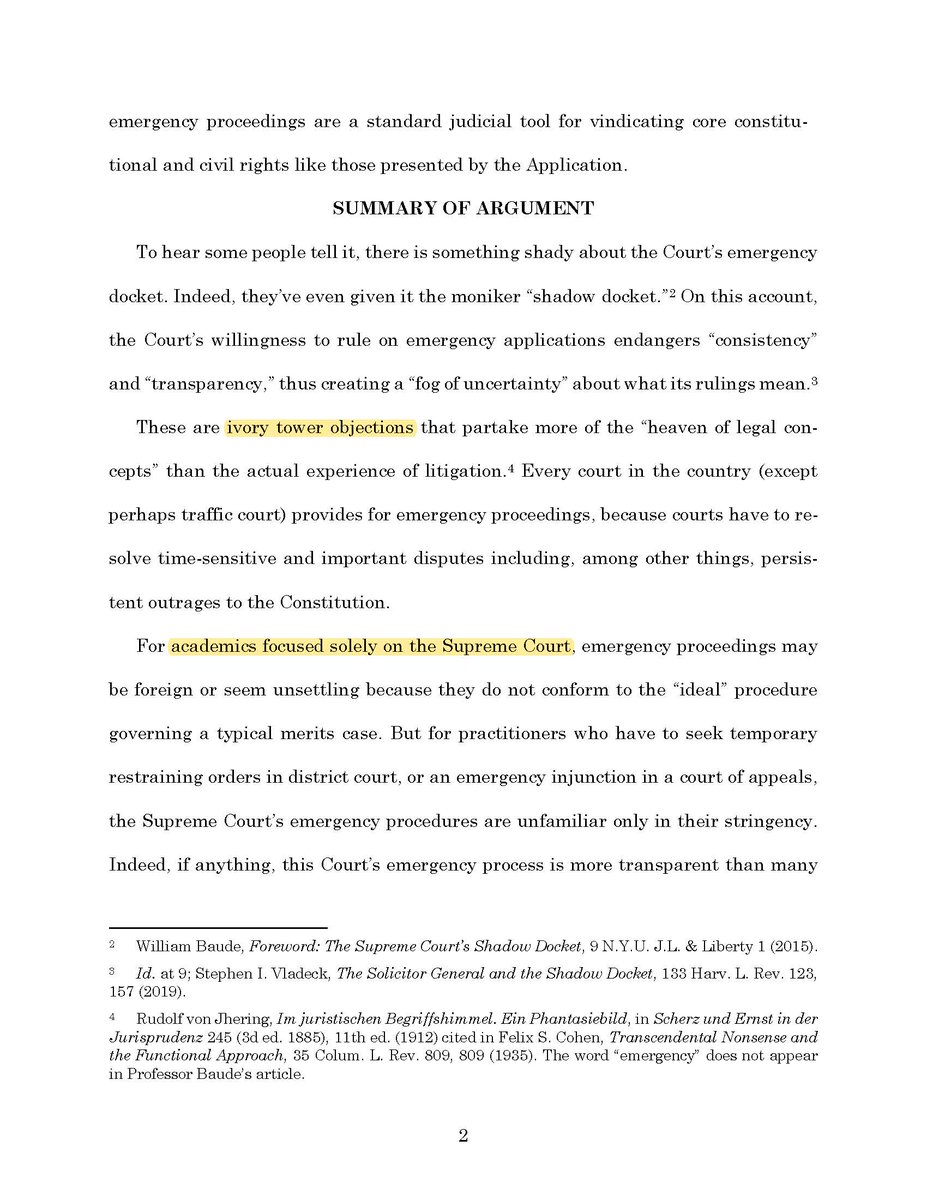
Yesterday, a Trump-appointed district judge issued a "nationwide" injunction (which I guess are fine now) against the Biden Administration's moratorium on new oil & gas leases on federal land:
ag.state.la.us/Files/Article/…
Hypocrisy aside, what's truly galling is the injury/equities:



ag.state.la.us/Files/Article/…
Hypocrisy aside, what's truly galling is the injury/equities:
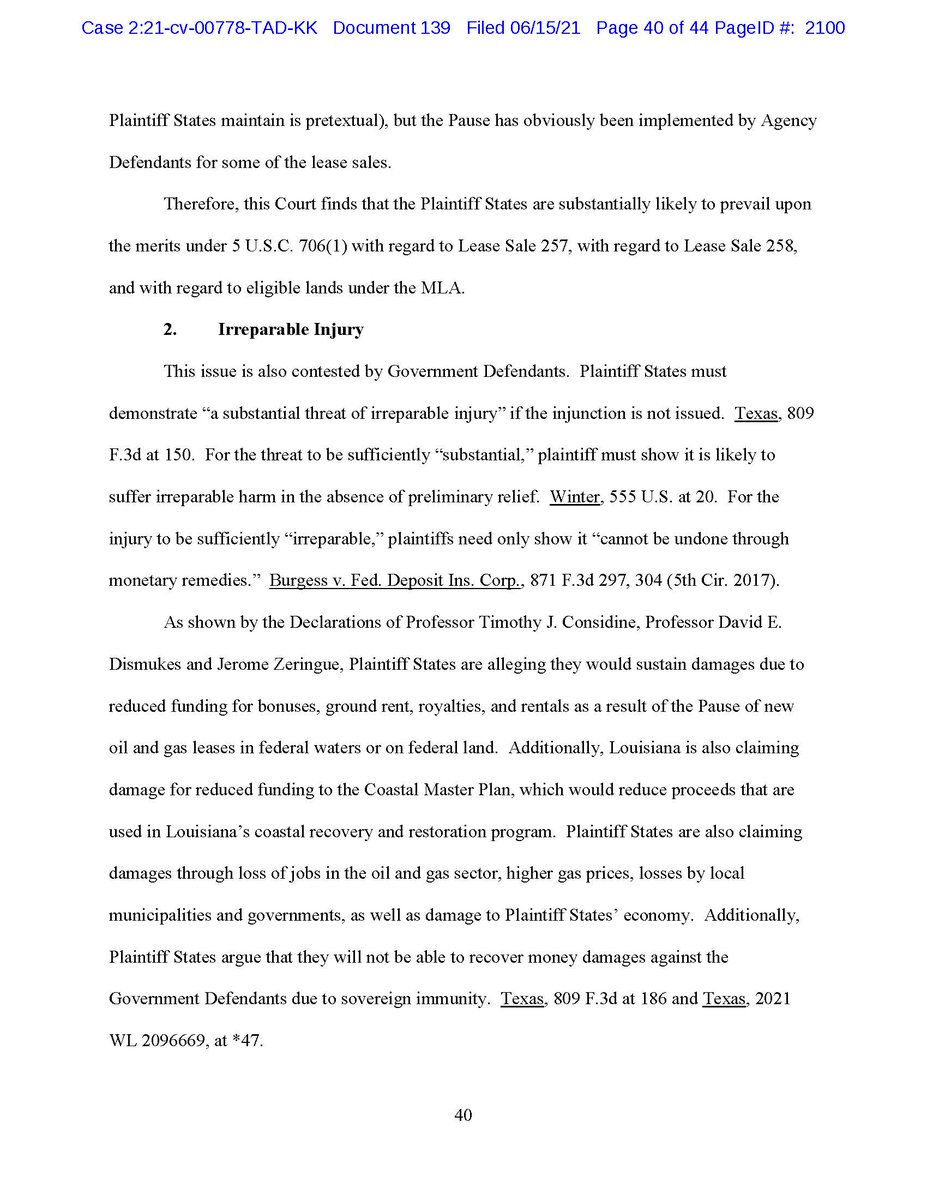

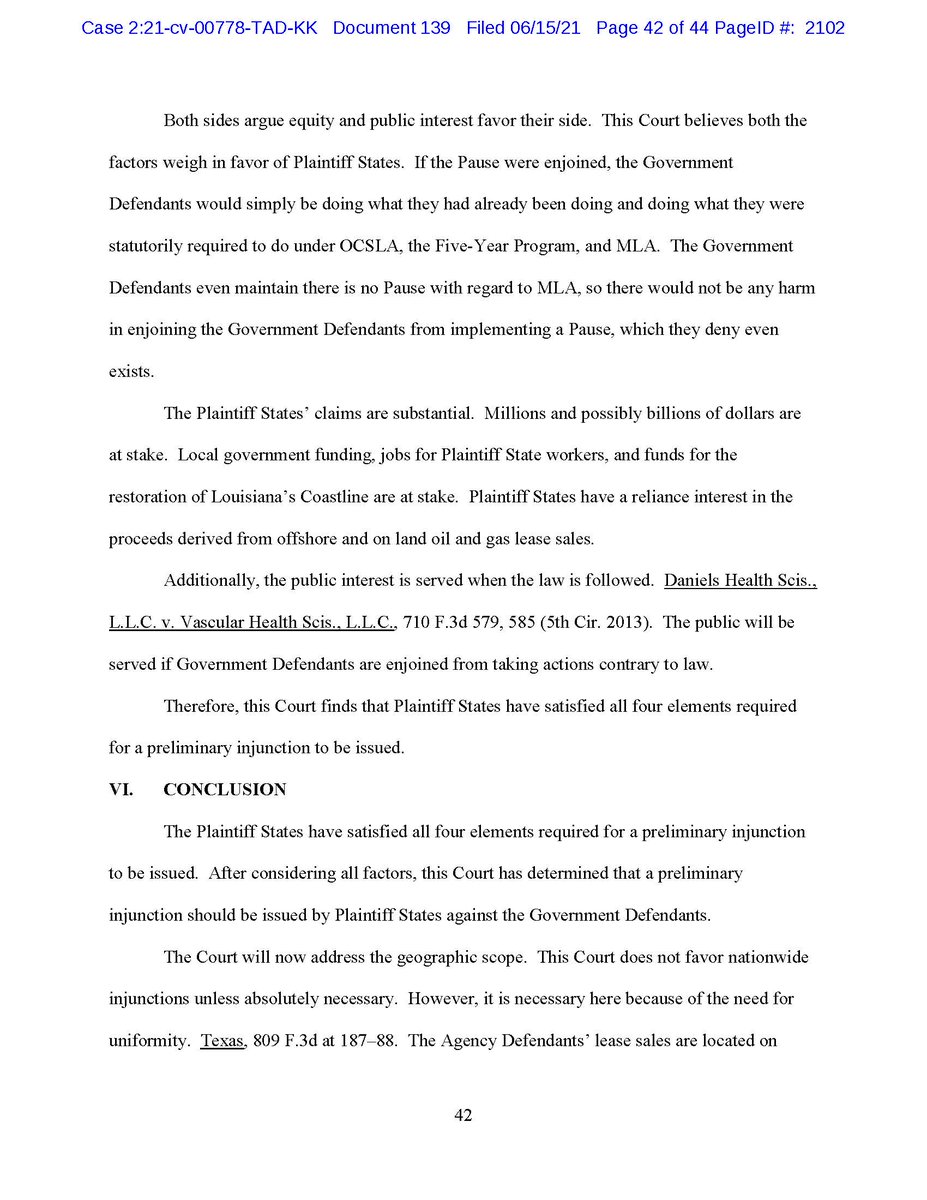

Throughout the Trump Administration, #SCOTUS *repeatedly* issued stays of lower-court injunctions based on DOJ's argument that *any* injunction of federal policy not only causes irreparable harm, but that such harm tilts the balance of equities *toward* the federal government.
In other words, the reason why the federal government did so well on the "shadow docket" over the last four years was at least largely because of a subtle but undeniable shift in how #SCOTUS weighed *these two factors* — as I documented in 2019:
harvardlawreview.org/wp-content/upl…
harvardlawreview.org/wp-content/upl…
But those factors shouldn't turn in any way on the substance of the underlying policies. Thus, either yesterday's ruling is simply ignoring that trend in #SCOTUS decisions, or the trend is better understood as having a distinctly partisan (and, thus, deeply problematic) valence.
• • •
Missing some Tweet in this thread? You can try to
force a refresh


